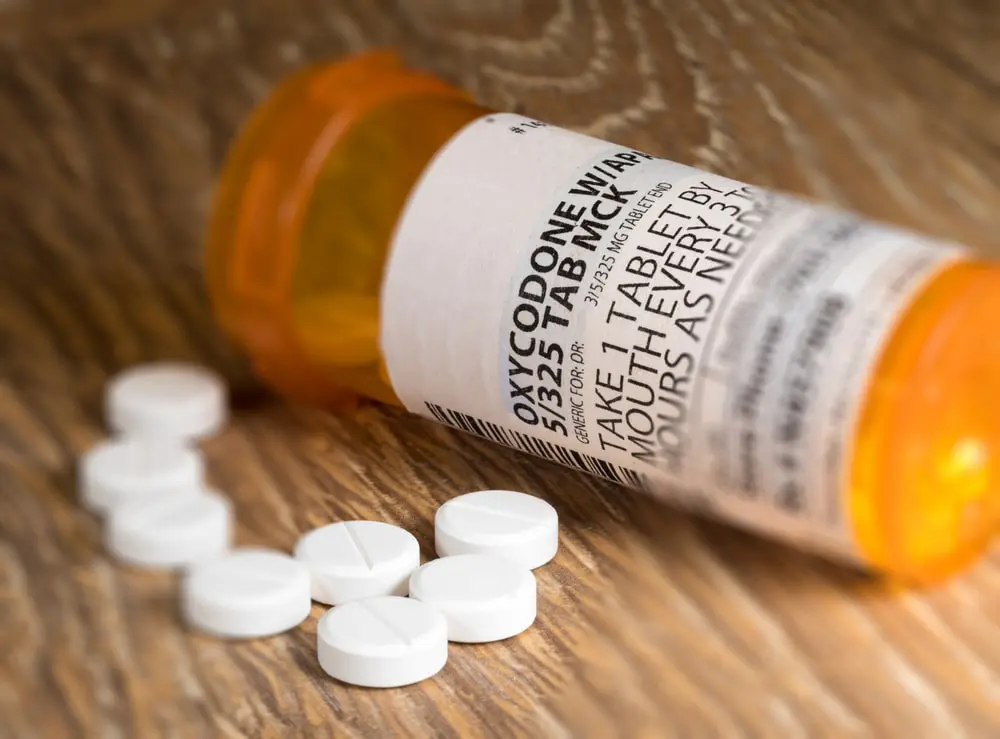Oxycodone Addiction & Treatment

Oxycodone is prescribed for the relief of moderate to severe pain. It is classified by the Drug Enforcement Agency (DEA) as a Schedule II drug. This means it carries heavy risk for addiction and is considered dangerous.
Oxycodone addiction is a chronic disease that affects thousands of people in the United States. It is an opioid used in many prescription painkillers, such as OxyContin. Anyone can succumb to an addiction to oxycodone, whether prescribed or used illicitly.
When first introduced as a prescription drug, oxycodone was marketed as a painkiller with a low rate of addiction. In 2009, the makers of OxyContin released a new version of the drug because they learned addiction rates began to rise. The new drug was supposed to lower this risk. But addiction rates continued to soar.
According to the Centers for Disease Control, around 60,000 deaths in the United States were linked to opioids in 2016. Oxycodone was one of the opioids contributing to that number.
Today we are still in the midst of an opioid addiction crisis. Pain relievers such as these often create physical and mental dependency before a patient realizes what has happened. This makes treatment for oxycodone addiction a necessary and important part of mental health care today.
Signs of Oxycodone Use
Oxycodone is a strong drug. It is meant for those with moderate to severe pain and is rarely used for long-term pain management. But it does work when used correctly, and can provide the following benefits, which are considered signs of oxycodone use:
- Pain relief
- Muscle relaxation
- Anxiety relief
- Sedation
These signs show up as the medication takes effect and the user’s discomfort fades away. But for some, the pain may be so intense they feel the need for more. This could cause them to increase their own dose. For other users, especially those prone to Substance Use Disorder (SUD), the euphoric effect may cause oxycodone abuse.
Like other opioids, oxycodone may have signs and symptoms of use. These may be noticed by a patient taking their normal prescription or by those using it illicitly. If someone is abusing oxycodone, the signs may be more noticeable.
Oxycodone Side Effects
- Nausea
- Decreased appetite
- Dry mouth
- Dizziness
- Drowsiness
- Headache
- Flushed skin
- Constipation
- Stomach pains
- Muscle weakness
Other signs or symptoms of use can be more serious. They can be experienced by both prescribed users and illicit users. Oxycodone abuse happens when a person takes more than their doctor recommends or if someone takes it without a prescription.
Oxycodone Side Effects of Abuse
- Chest pain
- Respiratory depression
- Irregular heartbeat
- Rash
- Hoarse voice
- Swelling of the arms, legs, or face
- Drop in blood pressure when standing up
- Seizures
Opioids are known to cause breathing problems or respiratory depression. While all of the symptoms above are serious and require medical attention, using more than the prescribed amount can be deadly. Too much can lead to respiratory depression, which can cause coma or death.
Any dosage of oxycodone can be deadly if used with alcohol. Both are depressants and using alcohol could increase the effects. Crushing the pill and snorting it, smoking it, or injecting it can also have serious consequences and should be avoided.
Oxycodone Addiction Symptoms
Oxycodone is a highly addictive substance and should only be used with a prescription in recommended amounts. Taking it for a long time or too much can lead to dependency on the drug. This is oxycodone abuse that can quickly lead to addiction.
Opioids, like oxycodone, work by changing brain chemistry. They bind to opiate receptors to block pain and can increase feel-good brain chemicals like dopamine. As use continues, the body and brain become used to the presence of the drug and excess dopamine. This creates dependency and makes the user desire more of the drug to continue feeling good.
Once physical dependency takes over, the behavior may change. This may be because the user feels embarrassed or defensive about their addiction. Behavior changes may be noticed by those close to them.
Oxycodone Behavioral Changes
- Isolation as the person attempts to hide their drug use
- Mood swings
- Defensiveness when talking to a person about their oxycodone use
- Constantly changing doctors or sources for their prescription
- Financial problems
- Stealing or lying
When a person becomes addicted, they often build a tolerance to the drug. This leads to taking higher doses or taking it too often. As drug abuse continues, health may suffer.
Oxycodone Addiction Symptoms
- Shortness of breath
- Tolerance to oxycodone
- Vomiting
- Withdrawal symptoms when not taking the drug
- Pinpoint pupils
- Phantom pains
- Hypotension
- Memory problems
- Focus problems
- Delusions
- Psychosis
- Disorganized thoughts
- Depression
All of these are cause for concern. If you or someone you know is taking oxycodone with or without a prescription, the risk for addiction is high. Watching for these symptoms can lead to early intervention or help.
Oxycodone Withdrawal Symptoms
Because oxycodone alters brain chemistry, the system may become dependent on the drug. Users begin to feel they need to keep taking the drug to feel normal and avoid feeling sick. This is because when the person stops using the drug, withdrawal symptoms begin.
The withdrawal comes with physical and mental side effects. These can be mild to severe, and what a person feels will depend on many factors. Some of these factors that determine the extent of withdrawal symptoms may include:
- Weight and body fat of the user
- Length of time they took oxycodone
- How they took the drug
- How much the user took each day
- Genetics
Withdrawal symptoms are often not life-threatening, but can sometimes be serious. For this reason, a professional treatment center for addiction can help manage these symptoms.
Oxycodone Physical Withdrawal Symptoms
- Anxiety
- Depression
- Sweating
- Body aches and pains
- Stomach cramps
- Diarrhea
- Runny nose and eyes (like allergy symptoms)
- Shakes and tremors
- Brain fog
- Thoughts of suicide
- Seizures
How Long Does Oxycodone Stay in Your System?
The half-life of a drug is the amount of time it takes the body to eliminate half of the drug. The half-life for oxycodone is between three to five hours. But the effects may be felt for up to 22 hours. Taking too much of a drug, or taking a dose before it has left your system may cause an accidental overdose.
The length of time oxycodone stays in the body is different for each person. The size and metabolism of the user will alter how long it can take for the body to remove the drug. But drug testing can show the use of oxycodone for much longer. Here are some examples of various types of drug tests:
- Hair Test: A hair test may detect oxycodone in the system for up to 90 days
- Blood Test: A blood test could show oxycodone in your system for up to 24 hours
- Urine Test: A urine test for drugs could show oxycodone use for up to 4 days
- Saliva Test: This could detect oxycodone for up to 4 days
Of course, these times are only estimated. Each person’s metabolism and body composition are different. The length of time a person used the drug, and how much they used will determine the outcome of tests. Using it with other drugs and alcohol could greatly alter testing and the length of time oxycodone stays in your body.
Treatment for Oxycodone Addiction
Oxycodone is highly addictive, and professional treatment should be used for recovery. There are many paths a person can take to recover, and an addiction specialist can help create a plan. This will be different for each person and depend on:
- Treatment centers in the area
- The extent of the addiction
- Personality of the patient
Physical detoxification from oxycodone is the first step of treatment. Withdrawal symptoms will happen during detox and can greatly increase the risk for relapse. This is because symptoms are uncomfortable or sometimes frightening. People may resort to using the drug again in an attempt to feel better. Professional medical intervention can help avoid this.
Medical treatment can help a person stop using oxycodone. Since it is an opioid, a weaker opioid may be used to help the person wean off the drug. This can help the body adjust to life without opioids. This is sometimes called the taper-off method for detox.
Once the detox is complete, standard treatment guidelines recommend that professional treatment centers address all the needs of the patient. This is called rehab and includes mental health therapy along with other methods for addiction recovery.
Methods of Treatment
- Individual therapy to help monitor the patient while in recovery
- Individual therapy to help manage mental health issues
- Group therapy for peer support such as a 12 Step Program
- Behavioral therapies to help patients learn new patterns of behavior without drugs
- Workshops for successful recovery like job training
- Classes for addiction recovery to learn how to avoid triggers and other helpful lessons
Addiction treatment may begin with detox at an inpatient program or at a residential facility. This will provide professional oversight that can help a patient avoid complications or relapse. Many inpatient programs offer medical management for safe detox.
Outpatient facilities are also an option for addiction treatment. These are sometimes used after a patient goes through detox at an inpatient facility or hospital.
Some outpatient facilities offer medically assisted treatment where the patient can pick up their daily meds to help with detox. Outpatient programs are offered at various levels depending on the severity of the patient’s addiction.
A Partial Hospitalization Program (PHP) is the most intense. The patient is allowed to stay at home but must spend most of the day in treatment. An Intensive Outpatient Program (IOP) is similar, but with less time spent at the facility.
Standard outpatient programs are less intensive and offer individual plans for the patient in recovery. They may attend therapy, group counseling, and classes to help with ongoing recovery. Some patients may attend rehab for months or even years after their initial recovery. This practice can help ensure they don’t relapse back into drug addiction.
Each of these programs is a proven method for addiction treatment. An addiction specialist can help determine an individual’s needs and level of addiction. Getting help for addiction as soon as possible increases the success rate for recovery.
- DEA (n.d.). Drug Scheduling. Retrieved May 27, 2019 https://www.dea.gov/drug-scheduling


